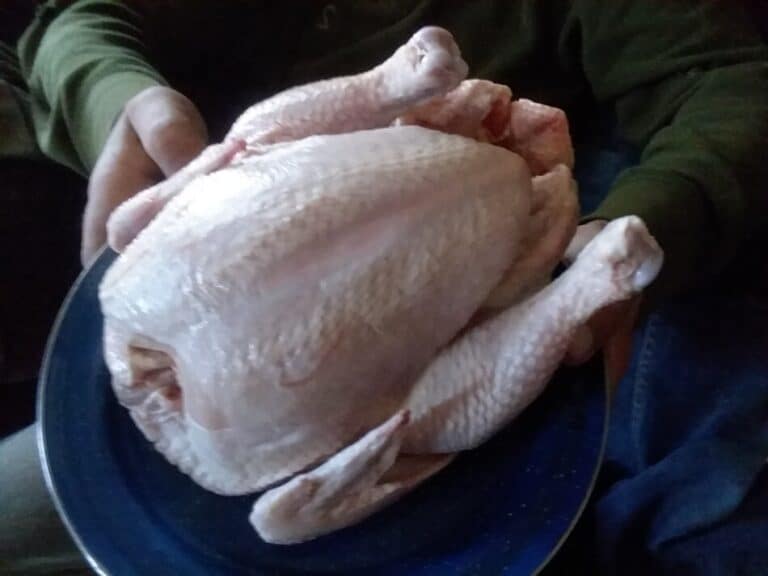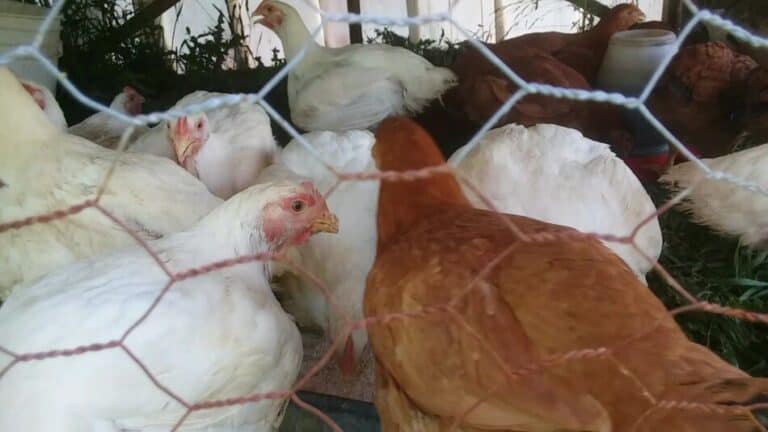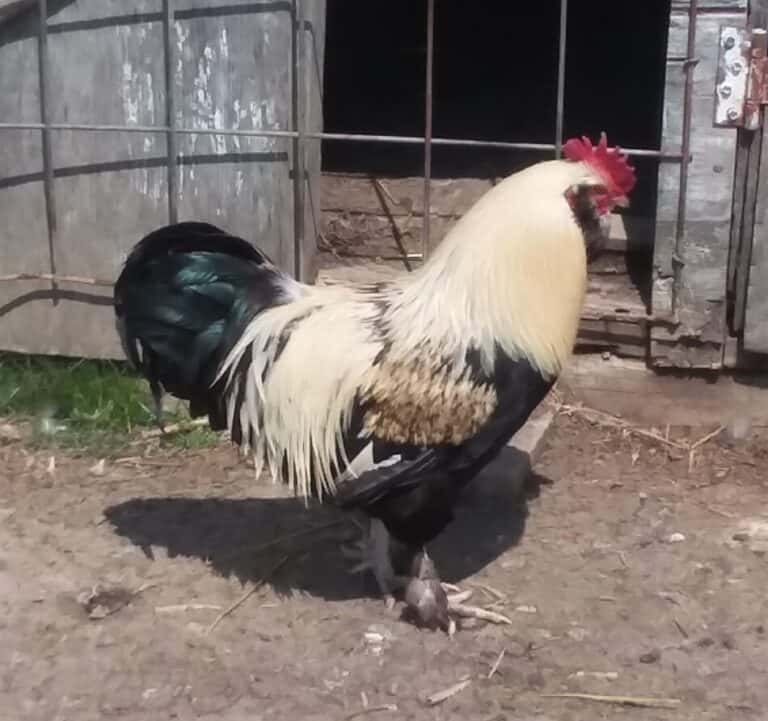Is Raising Chickens For Eggs Worth It?
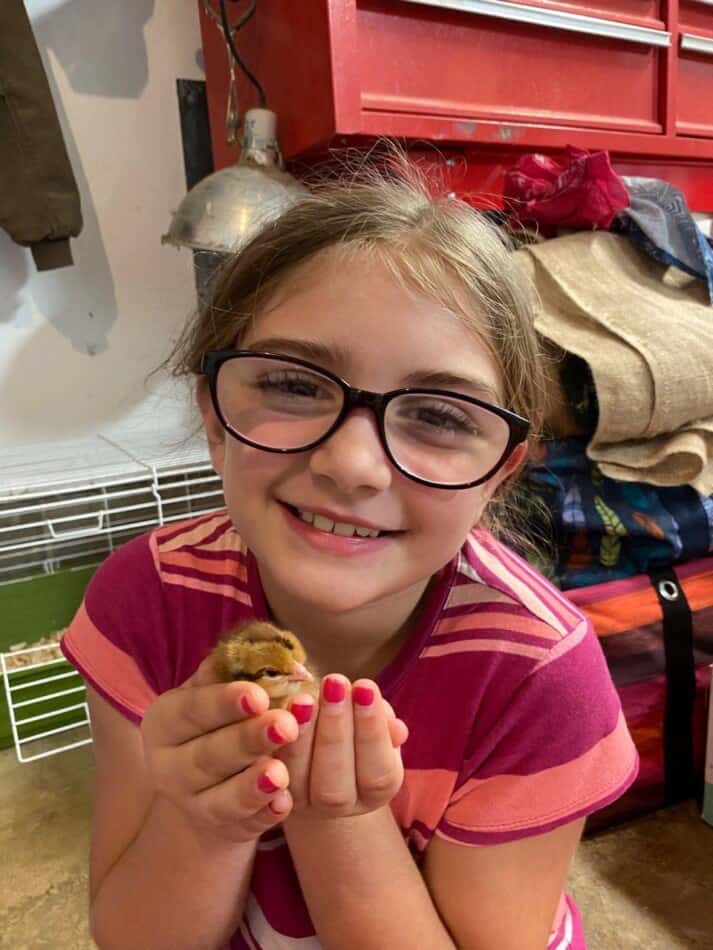
Fresh eggs from your own chickens, it doesn’t get better than that! You’ll have plenty of eggs to use, give to friends or extras to sell.
Now for the big question, how much are those eggs going to cost you and are they worth it?
Keeping laying hens for eggs, will cost you $1.42 in feed costs per dozen eggs, not including buying the birds or other expenses like feeders or housing.
Keeping some laying hens as a family project is fun and easy! Not to mention, you’ll be hard pressed to find a higher quality egg and no one’s eggs will be fresher!
For me, yes, raising your own layers for eggs is definitely worth it! Here’s the things you need to consider so that you can decide if layers will work for you.
20 Of The Calmest Chicken Breeds gives you some options for egg layers that are easy to be around, as well.
Before you get set up for chickens, you’ll need to think over what you are willing to spend and how much time you are willing to put into producing your own eggs.
| Cash expenses for laying hens | Cost |
| Chick | $4.50 |
| Feed (from chick to laying age) | $5.40 |
| OR (two above costs or the the cost below, not both!) | |
| Ready to lay birds | $10-25 each |
| Feed cost per week per bird | $0.57 |
| Feed cost per dozen eggs | $1.42 |
Chicks will cost $5.40 to raise to laying size.
Your pullets (young female chickens that are not laying eggs yet) will need to eat about 15 pounds of feed each to get from baby chick to laying age.

If you are getting your feed at the local feed store in 50 pound bags, you will be paying $0.36 per pound for most of that feed.
Here’s the math: 15 pounds of feed x $0.36=$5.40
This feed will be a bit more expensive than the layer feed they will need later. If you can get your feed at a feed mill, your costs will be significantly lower.
The $5.40 is just the cost of feed, the cost of the chicks would be another $3-5 each, depending upon what chicks you decided to buy and from where.
Generally, the more unusual breeds will cost more per bird and the birds that are most popular at the hatchery you are using will cost less.
It’s not about better or worse chickens, it’s just popularity usually means efficient production so the hatchery can charge less per bird.
If you are interested in learning more about choosing where to get your chicks, read my article How To Choose A Chicken Hatchery.
Laying hens need 2.1 pounds of laying mash per week.
Your hens will be eating anywhere from 1.8-2.4 pounds of feed per bird per week (for the details, click here for the Poultry Extension website article).
2.1 is the average, but your flock’s average will depend upon the body size and efficiency of your birds.
Smaller birds like Leghorns or Polish will use less feed and bigger bodied birds like Brahmas will need more feed.
If you want the most efficient egg production, stick with the tried and true varieties, like Australorp, Barred Rock, Rhode Island Red, or one of the laying hybrids like Golden Comets or Black Star.
These gals, and other breeds like them, will give you the most eggs for the feed eaten.
Do You Need Laying Mash? gives you the scoop of why laying mash will help out your hens.
You need 3 hens per dozen eggs per week.
First off, feed laying mash! It will make all the difference in the world as far as your hens laying or not.
If you want to be sure have plenty of eggs, you’ll need to have a high producing breed, from which you’ll get 15 eggs per three hens per week.
If you have a less productive breed or are happy with a more moderate rate of laying, you’ll get right around a dozen eggs per week for three birds.
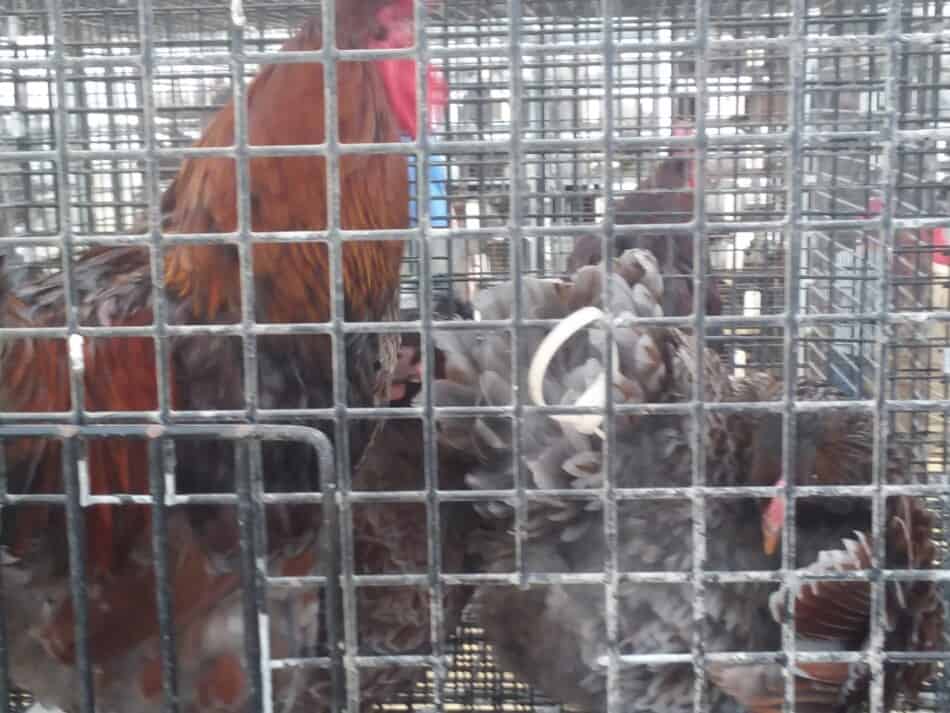
Your birds will vary a bit from the description
This may be the time to mention, that we have had a variety of poultry through the years and for the most part the description in the catalog is accurate, but not 100%.
You’ll get birds that will do a bit better and a bit worse than the numbers in the catalog.
Chicken Breed Selection is an Ohio State article with an overview section followed by a chart that gives specifics on quite a few breeds when you scroll down.
For instance, we had some White Crested Black Polish chickens (black body with white head feathers).
They we great layers of medium to small sized eggs, some even hatched their own babies (not something Polish are supposed to do)!
They are also very calm, once their head feathers grow enough to cover their eyes.
What the hatcheries don’t tell you is that when they are in the brooder, they are actually a bit hyper.
From what we have seen, it’s more about being unable to see through the feathers than naturally being a quieter bird.
Feed cost per dozen eggs is $1.42.
To figure cost per dozen eggs, we’ll need to set some guidelines and do a bit of figuring.
Let’s figure that your chickens will be laying 5 eggs per week each and that you have 10 hens. You will be getting 50 eggs per week, which is just over 4 dozen, we’ll use 4 dozen.
Do Chickens Need Grit? helps you decide if your chickens need supplemental grit to digest their feed, or if they get plenty in their normal diet.
Hens need 2.1 pounds of feed each per week, so your flock of 10 hens need 21 pounds of feed per week.
While you have a variety of choices for your layer feed, let’s use something very normal for this example, a 16% layer feed that is $13.49 for 50 pounds. This makes the layer feed $0.27 per pound.
21 pounds of feed x $0.27=$5.67 in weekly feed costs for 10 hens
$5.67 divided by 4 dozen eggs= $1.42 in feed costs per dozen eggs
Remember, use the numbers that make sense for your situation. Your feed costs can be higher or nearly nothing.
Your chickens may be better layers, reliably producing one eggs per day, think Australorps or Barred Rocks (can you tell my favorite egg laying breeds yet?).
Or you may have a breed that is less productive, like a less common breed producing more like 2-3 eggs per week.
This lower production level is where my Salmon Faverolles are at.
These gals are real sweethearts, such cute and friendly chickens, but not kicking butt in the production department, that’s for sure!
Compare to high quality eggs (not store eggs)
When you are comparing costs and considering if raising your own egg layers is right for you, be sure that you are comparing value, not just price.
The eggs you can get at the supermarket are not even close to the amazingly fresh and flavorful eggs you will be getting from your own chickens.
Seek out price comparisons that are valid.
None of the eggs in the supermarket are as good as yours! Search online to see what is available or go to Polyfaceyum.com (this is the site I always use) to see prices that would compare to your home raised eggs.
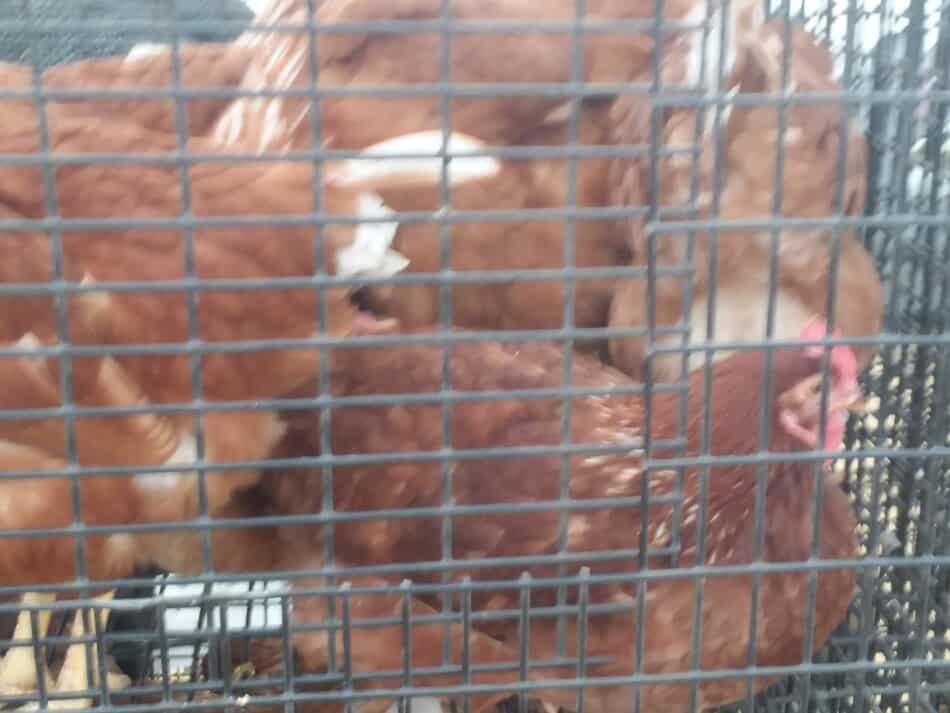
This includes feed costs only
The $1.42 per dozen is feed costs only. Anything you have purchased to make your chickens productive and happy is not included in that $1.42.
What other costs am I referring to? Costs like the coop, feeders, waterers, buying the birds, etc.
These costs are important to include in your budget, for sure! The reason I left them out is so that you can decide how to handle them in the way that makes sense to you.
The way we handle these costs is to figure everything on a cash basis. By “cash basis” I mean when we buy it, we count the entire cost of the item right then.
For instance: when we buy a new waterer for the brooder, we count the entire cost of the brooder in that batch of chicks.
Even though the waterer will be used for years afterwards, we count the cost as it occurs.
Some people depreciate the costs out over the useful lifetime of the item purchased and I understand why, but we don’t.
To me, when the money leaves my wallet, I count the cost.
You’ll need to decide how to handle any costs that you had for your chickens before they started producing eggs.
You’ll also need to figure in your time. I figure the costs without my time and then add my “hourly rate” in later, if I want to figure it.
We have chickens because we like them and enjoy having them around, so I don’t get to worried about my time taking care of them.
If we were selling eggs, now we need to figure in our time and other selling related expenses, like cartons.
Chickens eat bugs, like ticks.
If you are concerned about ticks, chickens may be just what you are looking for. Read my article Backyard Birds That Love To Eat Ticks, for more details.
In our area, ticks are a big deal this year, more so than normal.
We don’t worry about ticks, at all. In fact, we hardly ever see one. Why? Simple, we have chickens running loose in our yard!
The good news is that your chickens will be patrolling our yard for all kinds of bugs, including ticks, as part of their daily doings.
Chickens love to peck around and see what they can find to snack on. See a tick, eat a tick, it’s the chicken way.
Raising chickens for eggs is easy!
Chickens are soaring in popularity because they can go nearly anywhere and are easy to care for.
Almost any backyard can hold at least a few laying hens, especially if you put them in a chicken tractor (a movable grazing pen on the ground).
All you need to do is grab any eggs, move them to the next section of grass and refill the feed and water. Easy peasy.
The hens will take care of debugging your yard and fertilizing, for no extra charge!
If you keep your chickens in a coop, your routine will be nearly the same, you just won’t move the cage everyday.
You could move the coop, as needed, or just open the door and let your gals figure out where they want to be for the day.
If you notice that they are doing too much “work” to a certain area, move the coop or fence them out of that spot.
Keep the hens out of your garden
I will caution any fellow gardeners, you must keep the chickens out of your garden! If you think that you can sneak in there and plant without them noticing you are mistaken!
Either fence them out, or have your garden set up to accommodate the chicken tractor that you pull over finished areas or between rows.
This keeping them out of the garden issue is the only part about chickens that is not super easy. It’s not hard, but it is one more thing to handle.
You do not need a rooster
Many first time chicken owners are worried about having a rooster hanging around an potentially being difficult.
Good news, if you just want eggs, you do not need a rooster around at all! Your hens will lay eggs just fine without ever being around a rooster.
If you want to have fertile eggs or the option to hatch some of the eggs your chickens are laying, now, of course, there needs to be a rooster around.
If you are undecided about getting a rooster, just get the hens first and see how things go.
When you decide that you want to raise some of your own chicks, or depending upon the breed, let the hens hatch some babies, get a rooster then.
Need A Rooster For Your Hens? goes into more details. There are a few positives to having a rooster, but you don’t need one to get eggs.
Get the rooster before you need him
I’d do your shopping around a few months before you want him, that way you have choices.
Since the incubation of chicken eggs is 21 days and your chickens will only lay one egg per day (at most), you’ll need to back track to have a rooster in time.
For example: if you are going to let a hen set on eggs, she’ll need 2 weeks or so to lay the eggs (unless her buddies help her out and add to her clutch) and 21 days to set and hatch them.
So far, that’s 5 weeks. I’d want a rooster a month or so before that, taking your total time up to 8-9 weeks before hatching.
This way he has time to settle in and recooperate from the stress of transportation and adjust to his new home.
Most chickens will start laying at 5-6 months of age.
Chickens start laying pretty quickly, chicks that you get in the spring will be laying in the fall!
That’s a fast trip from baby chick to egg producer, all right in your backyard with basic supplies. Raising chickens is kid friendly, as well!
All you need to do is collect the eggs.
The beauty of laying hens is that all you need to do is collect the eggs (and make sure the feeder and waterer are full).
Once in a while, add some bedding to keep the coop nice and enjoy the wonderful eggs your gals are producing for you!
Chickens are take “care of themselves” kind of gals for most of the day.
I would have a secure place to lock them up at night, though.
This is almost a misleading statement, since you are really locking out predators rather than locking in the hens! Either way you look at it, make sure your gals are safe at night.

